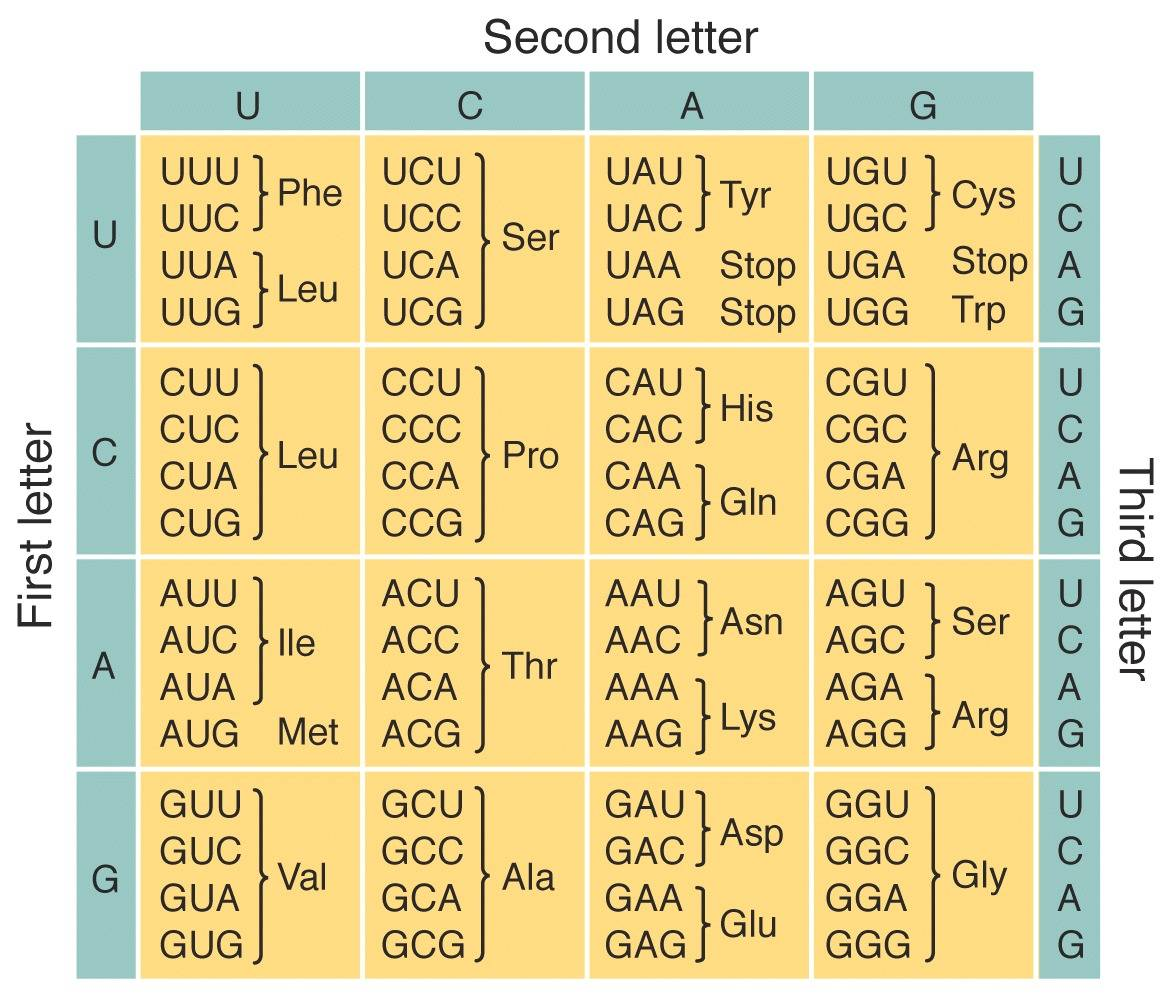So when we talk about “translating” genes into proteins what we’re talking about is how the nucleotide sequence in a gene gets sent, in the form of RNA, to a large complex of protein and RNA molecules called a ribosome. The ribosome “reads” the nucleotide sequence on the RNA transcript and assembles a protein. That protein then goes off and does the chemistry that keeps you alive: moving food and signaling molecules through membranes, breaking down food and transducing signals inside cells, affecting the rates at which other proteins work, degrading and breaking down other old proteins, binding to and copying the DNA that codes for more proteins and on and on. Proteins do almost all of the chemistry that goes on inside cells. DNA contains the instructions to build proteins, but does not itself do any chemistry. Thus evolution has developed a division of labor between proteins which catalyze the chemistry of life and DNA which stores the information required to build this chemical capacity.
This is what constitutes “the genetic code.” The mathematics of translating a four-letter language into a 20-letter language necessitate that 3 nucleotides code for one amino acid. So every possible three letter combination of the four nucleotides is called a "codon." Here’s a table which connects the 64 possible (4 letters in three combinations means 4^3 = 64 possibilities) codons to the 20 amino acids they encode along with the message to start and stop protein synthesis:
So the ribosome, which again, is itself nothing but an assemblage of proteins and RNA, performs this “translation” which makes proteins from RNA templates. The point that you should take away from this table can be inferred simply from the fact that it exists: The genetic code is the first instance in which biology exerts autonomy from chemistry. No chemical necessity or thermodynamic driving force explicitly connects the three nucleotides “CAU” to the amino acid histidine rather than the amino acid glutamine. Likewise no necessity connects the letters CAT to the existence of cute, furry pets. This is exactly why, if I know the language, the word cat conveys information to me. I was taught to associate that word with a phenomena, despite the fact that nothing about the sound itself tells me to associate this word with that phenomena. Likewise, the fact that the nucleotides themselves appear to have no chemical connection to the amino acids they code for is the very reason that we call it a code rather than just “genetic chemistry.”
